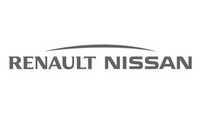A New Step Forward for the Alliance
PARIS, FRANCE – May 29, 2009: “Over the last decade, we used
the Alliance to develop win-win synergies between Renault and Nissan, and
that approach worked well when both were profitable and growing,”
says Carlos Ghosn, Chairman and CEO of the Renault-Nissan Alliance.
“Today, we have to move faster. Seeking synergies is no longer
optional, but mandatory. We have assigned a group of experts to focus on
building greater synergies to get us through the crisis and position us
competitively for the future.”
Since 1999, Renault and Nissan have achieved and developed an alliance
that has created significant value for the two companies. The achievements
include shared platforms and powertrains, cooperation on advanced
technologies, standardization of manufacturing methods, the expansion of
the product line-ups and the extension of the global footprint of each
partner. Combined vehicle sales have increased from 4.9 million units in
1999 to 6.9 million in 2008 (including Avtovaz), making the Renault-Nissan
Alliance the world’s third-largest automotive group.
In the current economic environment, cooperation between the two
companies will accelerate. The target set for 2009 is €1.5 billion in
synergies evenly divided between the two Alliance partners. These synergies
can be analyzed as follows:
Manufacturing and logistics are expected to
account for €363 million of total synergies. The Alliance partners
will continue to share manufacturing facilities to benefit from local
industrial opportunities, manufacture in local currencies and optimize
existing plant capacity. In 2009, for example, Renault’s plant in
Brazil will produce two additional Nissan vehicles while Nissan’s
plant in South Africa builds two additional Renault vehicles. By the end of
2009, a total of 11 vehicles will be cross-manufactured. In Logistics,
further savings will be generated in both inbound and outbound logistics by
sharing additional CKD centers, vehicle components and standardizing
logistics flows, particularly in Europe. Powertrains will generate
€289 million of total synergies. The Alliance partners will boost
cooperation from the exchange of engines to the co-ownership of engine
families, generating savings on development, purchasing and manufacturing
costs. One example is the development by Renault of new small,
turbo-charged gasoline engines from Nissan’s engine base. So far,
some 50% of powertrain components are shared. Vehicle engineering
represents €279 million of total synergies through the use of common
platforms and interchangeable components. Common and shared platforms
currently account for 70% of the Alliance’s production volume. For
example, Renault and Nissan plan to use a common platform for an
entry-level project in India. The use of interchangeable components on
Renault and Nissan vehicles is a growing source of savings. For instance, a
single core component in air conditioning systems will be used on 24 body
variants on the B and C platforms. Purchasing synergies will generate
savings of €157 million. Since April 2009, the Renault-Nissan
Purchasing Organization has handled 100% of the Alliance’s purchasing
requirements. To date, the focus has been on parts and raw materials, but
the scope is being expanded to purchased services. Synergy examples include
brake sourcing opportunities and increasing Nissan’s sourcing in
Korea to leverage the Renault/Samsung supplier network. Further savings are
expected as the two companies reduce the diversity of their parts range.
Sales and marketing synergies represent €147 million of total
synergies. In media buying, for example, a single company now handles both
Renault’s and Nissan’s accounts in Europe. Research and
advanced technology is expected to bring cost savings of €115
million, as the two companies coordinate efforts to avoid overlaps and
improve resource allocation. For example, both Renault and Nissan’s
electric vehicles will be equipped with jointly developed batteries.
Renault’s fuel cell vehicle, presented last year, uses Nissan’s
fuel cell technology. The two companies will also pool their efforts in
technologies related to CO2 emissions, life on board, safety and dynamic
performance. Light commercial vehicles account for €102 million
of identified synergies. For example, the two partners recently agreed to
move to one common platform in Europe to build two differentiated light
commercial vehicles. Information systems and support functions account
for €48 million of identified synergies. In Europe, the two partners
will intensify the use of available common internal resources in IS/IT. The
two partners will further consolidate their data network
infrastructure.
Today, the Alliance gives Renault and Nissan a unique competitive
advantage in a sector hit by the global economic crisis. To maximize the
know-how gained from 10 years of cross-cultural management and shared
experience, the Alliance has set up a small dedicated team of six persons
from Nissan and five from Renault. Beginning June 1, they will apply their
in-depth understanding of both companies to foster synergies at all levels
and push for greater commonization and standardization, not just in 2009
but well into the future.
This dedicated Alliance team will focus on the following areas
identified as priorities: Purchasing, Global Sourcing, Common Platforms and
Parts, Powertrains, Support Functions, Global Logistics, IS/IT, Research
and Advanced Technologies, and Zero Emission Business.
The Alliance has been a tool for better performance, based on the trust
and confidence gained through 10 years of working together. Accelerating
synergies and supporting them with a dedicated organization will help both
companies weather the current crisis and emerge as stronger and more
competitive global companies.



